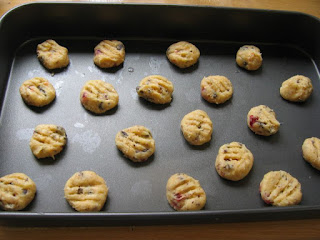So frustrating - this recession has effectively delayed our plans, and move, by at least a year (at this stage). Being nasty - I hope that the families of those bankers who caused this recession and who are not in jail, are also having a hard time of it - but I doubt that, as I'm sure their savings accounts are well padded after all the years of exorbitant salaries / bonuses they have received... I will NEVER understand why those excessive yearly payouts, for work that they are employed to do, occur!!!!?
But, we were trying to explain to WGuy what it is like on the farm - WGuy has never been there.
The comment that was passed was: "It's amazing - how one can make do with less. Every time one switches on a light, it is because it is necessary, and not because one wants a house lit up like a Christmas Tree. Living with less (electricity, mod cons, etc) makes one think twice before just blindly switching / turning something on".
That comment was not made by RMan nor myself!
And then both of our children stated that it is easy to adapt - and that adaptation does not mean that life is deprived - just more thoughtfully lived.
Whoopeeeeeeee! I almost feel like Henry Higgins did when he successfully coached Eliza Doolittle to speak like a lady.
To hear our children admitting, to us, that the "normal" lifestyle is one that is actually based on luxury, and that a comfortable life "without" can be lived with little or no great harm / difference to their lives, is exactly what we set out to do - to show our children that one can walk far more gently on this planet. To know that they genuinely, and honestly, appreciate the simpler way of life - well, that just warms the cockles of my heart :-)
And to hear them say that what draws them back to our little farm each time is the peace and quiet - the serenity and the sense of being totally aware of their surroundings. For we never force them to go there - it is always up to them if they would like to take that 2 1/2 hour drive away from the hustle and bustle of the city life.
I feel like I have just received the very best gift I could ask for.
The simple life - I love the glow created by candle light / paraffin lamps, and feel no lack of TV, for our simple car radio keeps us in touch with what is happening "out there", whilst also providing our favourite music. A roof over our heads, running water, clean air and crystal clear evening skies...
So what if the wind blows - you learn to adapt and shelter from it - or open windows on the other side of the house from which it is blowing. And with the sun which pelts down in summer - well, one just gets up earlier to do what is necessary before it gets too warm - then a little siesta J - before continuing later in the afternoon when the temperature has dropped. Adaptation is the key word.
I am so very grateful that we have been able to expose our children, and grandchild, to a more real side of life. Hopefully they carry that knowledge / experience / awareness forward in their lives, and that they are better people for it.
 |
| This is the first time that I have done an indigenous kranz - MKid can hardly wait to open all those gifts under the tree... :-) |
And thank you one and all for your friendship, encouragement and support of my blog - your friendship is very important to me.
























































